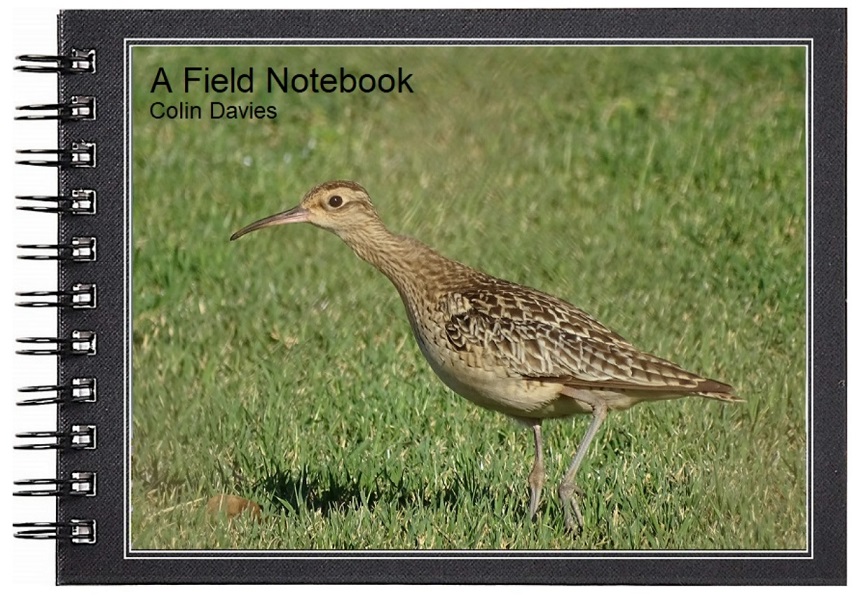It's been a poor winter for geese in north west England in my opinion, with
below average numbers of unusual species in amongst the flocks of pink-footed
geese. However, in recent days pink-foot numbers have built up on the Fylde as
birds from Norfolk begin to return to the area before heading north in the
next week or so, and with them has come a wonderful adult lesser white-fronted
goose.
This is one of my favourite species of any bird, not just geese. They are the
reason why Peter Scott set up the Wildfowl Trust (now Wildfowl and wetlands
Trust) following a visit to Slimbridge in 1945. He was using a war time pill
box as a hide overlooking an area of marsh known as the Dumbles when he found
two lesser white-fronted geese with a flock of 2000 Russian white-fronts. He
decided almost there and then that this was the place for him to live and to
be the headquarters of a new conservation organisation that he had been
planning to setup. I recommend his book "The Eye of the
Wind" which gives a very evocative description of this period.
Having read this book in my youth, I always wanted to see lesser white-fronts
at Slimbridge, but sadly even though I visited a few times in the early 1980s
when the species was still almost annual, I failed to see any. I've always
considered Slimbridge the classic place to see the species and Russian
white-fronts the classic carrier species.
It took until 1991 for me to see my first lesser white-front, with pink-footed
geese at Martin Mere, but by that time we were already calling them "of
unknown origin".
The species has undergone steep declines in recent decades largely due to
hunting in their eastern European and Asian wintering grounds. In an effort to
save the species, conservationists in Sweden set up a release scheme which
aims to change the migration pattern of the species by directing them towards
Western Europe in winter rather than the east.
This is theoretically possible because unlike passerines, geese and swans
learn to migrate from their parents by travelling to their wintering grounds
in family flocks and the hope was that the Swedish birds would learn to travel
west every autumn.
I've haven't really followed the progress of this release scheme and don't
know much about it or how successful it's been, but the theory sounds good.
However, what it has left us with is three possibilities when it comes to the
origin of this lesser white-front at Upper Thurnham.
Swedish birds tend to overwinter in the Netherlands but this winter there have
been higher numbers than usual wintering in the UK, including seven ringed
birds at Flamborough Head and at least nine in Norfolk. Officially these birds
are not "tickable", probably because they're not yet considered to be a self
sustaining population. Today's bird could be from this population.
The second and perhaps least likely possibility is that it could be a
genuinely wild bird which has just got caught up with pink-footed geese and
travelled west rather than east. Afterall, Russian white-fronts are seen
regularly in North West England so why can't the occasional lesser white-front
appear as well? Traditionally they have always done so in very small numbers
at Slimbridge, though the Russian white-fronts they used to travel with have
themselves drastically reduced in recent decades so perhaps there is less opportunity now.
The least appealing possibility is that the Upper Thurnham bird is an escape
from a collection. The bird doesn't appear to be ringed, but this doesn't
really prove anything, though it's obviously better if it has no ring, because
at least it leaves all options open.
However, the pattern of the black bars on the belly are unique to individuals,
almost like a fingerprint, and this has enabled birders to identify the Upper
Thurnham bird as an adult that was previously present near King's Lynn in
Norfolk earlier in the winter. This is interesting because that particular
individual apparently arrived with the pink-footed geese and not as part of
the influx of Swedish released lesser white-fronts which occurred later in the
winter, though obviously Sweden as a source cannot be completely ruled out.
I suspect that we are never going to know the truth, and in the end it depends
where you stand with geese. I love them and find them incredibly evocative,
they're possibly my favourite family of birds, so I tend to take the attitude
innocent until proven guilty.
I go birding for experiences not ticks, and this was a fabulous experience. If anybody can prove to me that this isn't a wild bird then fine, but until then I'm not going to allow such a wonderful and spine tingling
moment as this to be spoilt by naysayers who just don't appreciate wildfowl. Life's too short, I want my Peter Scott moment!
Is there a wilder sight than this? I'm not in a pill box but as you can see, I am peering
through reeds to see the birds.
Breathtaking!
Plenty of brown hare activity in the area and across the mosslands at the
moment.
This is the very pill box that Peter Scott used to view the Russian
white-fronted goose flock at Slimbridge back in 1945 and presumably is where
he saw the first lesser white-fronted geese.

















No comments:
Post a Comment